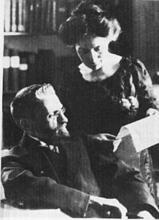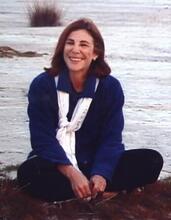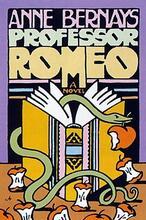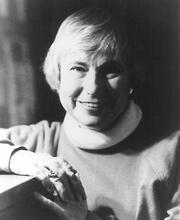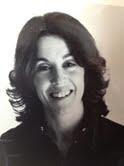Yiddish: Women's Participation in Eastern European Yiddish Press (1862-1903)
The development of the Yiddish press in the 1860s allowed Jewish women to move from the domestic into the public sphere and to be part of public discussion about communities’ affairs, to acquire knowledge of other Jewish towns and world events, and to express themselves publicly in their own language understood by all. They wrote letters to the editor, stories and articles, and opinion pieces and practical instructions. Women writers in the second generation suggested four possibilities for women: holding onto the familiar traditional identity, whose boundaries were determined by society; being indifferent to the paths their lives followed and thus losing any sense of identity or losing their minds; accepting bourgeois values despite uneasiness; or constantly fighting for an equal status in society and taking full responsibility for their lives.
1881 – 1903: Beginnings and Expectations
The modern Yiddish press first appeared in Odessa in 1862, with the publication of Kol Mevasser as a Yiddish-language supplement to the Ha-Melits Hebrew weekly, both published by editor Alexander Zederboim (1816-1896); Kol Mevasser appeared regularly until 1871, and sporadically for another two years. Ten years later Zederboim published a new Yiddish weekly, Dos Yiddihes Folks-Blat (DYF), this time in Petersburg. Only in 1903 was the first Yiddish daily, Der Friend, published in tzarist Russia.
At the time of Kol Mevasser’s appearance, Jewish society was already undergoing a process of disintegration—partly imposed from the outside, in the form of Russification, and partly stemming from internal forces, in particular the spread of the Jewish Enlightenment; European movement during the 1770s Haskalah (Enlightenment) from Western to Eastern Europe. The press, which was a product of this modernization, became the main platform for the new ideas of the Haskalah. The Yiddish press thereby accelerated the process of change. At the same time, however, because it was written in Yiddish, it inadvertently became a force for preservation, in that it afforded representation to smaller, more conservative localities and to the general Jewish public, the majority of which spoke and understood only Yiddish and were consequently exposed to news from the Empire and the world as well as the Jewish world.
Women welcomed the first Yiddish newspaper. It enabled them to be part of public discussion about communities' affairs, to acquire knowledge of other Jewish shtetlach (towns) and world events, and most importantly to express themselves publicly in their own language understood by all—unlike Hebrew, which was the “property” of the elite.
The first genre in which women expressed themselves in the Yiddish press was “correspondentsia” (letters to the editor). In 1887, the first women's story was published in Der Yiddish Veker [the Jewish wakener], a collection of articles and literature originally intended to be quarterly but published only once. Thereafter, stories by women appeared sporadically in the Yiddish press. Articles written by women—such as opinion pieces and practical instructions—were the last genre to appear in Yiddish press (with one exception), some forty years after women began their “love affair” with the medium. By this time, the traditional Jewish society of the Pale of Settlement was undergoing major changes, including passage from a homogenous religious society to a pluralistic society, with a new range of identities available within Jewish society.
CORRESPONDENTSIA
The correspondentsia section of the DYF was a combination of letters to the editor, reporting, pieces of gossip, social criticism, and individual opinions, particularly from remote and small towns. This type of press was close to its audience, with the editor engaged in an almost “familial” dialogue with his audience and writers, adding his comments at the end of many pieces. All writers wrote at their own initiative.
We know nothing about the women who contributed to the correspondentsia section, beyond their names and locations. They wrote to the paper and praised it despite the difficulties they encountered, particularly in small localities that were, by nature, much more traditional than larger cities. For example, one author wrote, "Since women started to read the true words of the Yiddishes Folksblat, they have gotten a new Geist [spirit]. They began to understand that everyone, a man as well as a woman, must have some impact in the world and toil for the greater good” (DYF, 2, January 11, 1884).
Women made up roughly one third of the contributors, writing some sixty items. Their subjects were highly diverse and provide a vivid portrait of Jewish life in the late nineteenth century.
The overall portrait that emerges is a harsh one of poverty and economic insecurity, fanaticism, sects, and misallocated charitable contributions. Writers also complained about discrimination, expressed physically in the neglect of facilities intended for women and socially when women were blamed for catastrophes that struck the community. Thus, after a horrible fire in the women section of the synagogue in the shtetl Zinkov, which led to the death of 32 women and two children, a woman correspondent who wrote about it added: "Our crazy fanatics are looking for more sins to blame the unfortunate women. They say this disaster happened because they wore strange headcovers” (DYF, October 14, 1883). Women’s correspondentsia also includes detailed descriptions of pogroms and their consequences in various localities, as well as the effects on the small towns of waves of emigration to America and other countries.
Women’s criticism stemmed from a genuine desire to maintain life in the form they knew. They observed the disintegration of their traditional life yet were incapable of halting this process. Unfortunately, this genre gradually declined and by the end of the century had almost disappeared, due to the weakening of the maskilic networks that had supported the female writers, immigration to urban areas that shifted attention away from the shtetlach, and the growth of the urban Jewish intelligentsia.
LITERATURE
The first story written by a woman in the Yiddish press was published in 1887, opens the first generation of the female contributors to the press. The world of these women writers was split between tradition and modernity, which they could not reconcile. They conceived of modernity, mostly identified with secular education, whether in public schools or Jewish schools developed by the female/sing.: Member of the Haskalah movement.maskilim, as a positive way to improve women’s status and saw traditional life as backward. Very little is known about the female authors' biographies, other than that they all came from maskilic homes, in which most of the fathers wrote in Hebrew; hardly anything is known about the mothers. Most, if not all, women writers acquired their education in schools developed by maskilim or from private teachers at home. The writers came from mid-sized and large cities in the southern regions of the Russian Empire, a Yiddish-speaking environment in the very heart of the Pale of Settlement.
In the polarized world presented by these women writers, tradition was represented by the mothers and modernity by the fathers. This dichotomy was expressed especially in the writers’ attitudes towards traditional women, particularly mothers, whom they stereotyped as Kleyn-shtetl-vayber [small-town women], uneducated, superstitious, narrow-minded, resisting any sign of progress, with no insight into their children's needs and at times simply cruel. The fathers, on the other hand, despite their piety, were portrayed as providing secular education for their daughters (extremely important to these women writers), being compassionate, and loving and understanding their children.
The writers' attitudes towards the shtetl corresponded to their views on parents. On the one hand, they perceived the shtetel as a primitive, backward, violent place; on the other hand, it was also the source of nostalgia for authentic Jewish life. The writers perceived the big city as either a modern attractive place or the cause of cultural and physical destruction of Jewish existence. Only one of these writers, Rokhel Brokhes (1880-1942), continued to write beyond 1903.
ARTICLES
Articles by women writers were published in “Froyenvelt” [Women’s World], the women's supplement to the weekly Der Yiddishe Folks-Zitung. Most of the material in “Froyenwelt” was written by men, but in 1903 seven articles were written by women. Five deal with practical matters concerning women, while the other two are opinion pieces. All reflect relatively affluent urban Jewish society and its bourgeois attitudes.
Besides the fact that these articles were written in Yiddish and appeared in a Jewish paper, little suggests a Jewish environment or indicates that they were intended for a Jewish audience. They do not mention synagogue or Jewish schools or the Ritual bathmikveh. Most of the articles accepted the bourgeois notion that women’s goal was to please their husbands. Through him and his satisfaction with her, she enters society and fulfills her identity and her natural aim in life. All articles engage in a vivid dialogue with general ideas outside the Jewish community, such as the movement against the corset, seen as a symbol of women’s enslavement.
In this first generation of women's writing in the Yiddish periodicals, the three genres of expression (correspondentisia, literature, and articles) demonstrate the passage from tradition to modernity and the difficulties women writers had in developing their own individual identities. Members of this first generation fit maskilic stereotypes of women, while the next generation more freely expressed their ideas and feelings.
1903 – 1914: Disappointments and Despair
Articles and Essays
Der Fraynd, the first Yiddish daily, appeared in 1903 and for two years was the sole daily paper in that language. Following the 1905 Tsar's Manifesto, the daily Yiddish press expanded and became an important feature in Jewish life. The dailies completely changed the nature of the newspapers. They focused on big cities, tremendously expanding the scope of subjects covered and that of the women writers as well. Topics such as labor unions (especially seamstresses’ unions), economics, libraries, theater and art, nationalism, education, and more were no longer solely male domains. Jews in the small towns and rural settlements captured the newspapers’ attention only in extreme circumstances, such as pogroms. Rokhl Ostrovsky, one of three reporters on the Kishenev pogrom (1903) for Der Fraynd, centered her reporting on the heroic behavior of a few women during the pogrom. She also introduced a new feature to Yiddish journalism by interviewing surviving wounded victims in the hospital and bringing their stories to the paper.
In Der Veg, the first Yiddish newspaper published in Warsaw (1905), Paula R. (1786-1941) reviewed local music and theater events. She also published symbolistic short stories and poetry in this paper and other literary journal, as well three dramas in the form of booklets. In one of her stories, for example, a woman talked with flowers on her window; in another, leaves of a tree talked with each other while falling.
Although Paula R. was the only woman to write about music, several women, including women from small towns, wrote about theater, the Jewish public’s favorite performing art. In general, the articles portrayed overly complicated relations between the theater and its critics.
No meaningful differences distinguished women’s theater reviews from men’s. Despite being very active writers and consumers of literature, women were absent from any literary critiques.
Most of the articles about politics were written by Esther Frumkin (1880–1943), one of the leaders of the socialist Bund. Frumkin was a member of the editorial staff of the Bund’s daily Folktsaytung and its correspondent on the Russian parliament, editor of the Minsk Der Veker, and a prolific publicist and essayist. Consequently, Bundism is represented in women reporters’ writings much more than its major rival, Zionism. Of the latter we learn mostly indirectly through information about rallies disrupted by the "Black hundreds" (a reactionary anti-Semitic militia) or the police.
Quite a few articles focused on the development of the seamstresses' labor unions, where women were most of the workers. The general picture is of exploitation, extremely harsh hygienic and work conditions, illiteracy, and very poor education, all of which the unions were supposed to correct. Although women workers strongly supported the union, the reporters felt that, because men occupied the higher-ranking positions among the textile workers, the unions either did not understand or ignored the seamstresses’ needs.
Frumkin’s essays oscillated between universal and national issues. In "Equal Rights to Languages," she laid the ideological foundations of the proposal of "National-Cultural-Autonomy" in Marxist terms; representing the Bundist leadership, she argued that it was important to allow each minority in the multi-national Russian Empire to develop its own culture, to receive services in its own language, and to elect representatives to the Duma [parliament] in accordance to its percentage in the general population. Frumkin, however, stressed the specific tasks of the Jewish proletariat in attaining this goal of autonomy. Regarding education, one of her major subjects, she opposed most of the traditional aspects of Jewish education. For example, she recommended eliminating all purely religious holidays, such as The Day of Atonement, which falls on the 10th day of the Hebrew month of Tishrei and is devoted to prayer and fasting.Yom Kippur and The Jewish New Year, held on the first and second days of the Hebrew month of Tishrei. Referred to alternatively as the "Day of Judgement" and the "Day of Blowing" (of the shofar).Rosh Ha-Shanah; she would retain Lit. "dedication." The 8-day "Festival of Lights" celebrated beginning on the 25th day of the Hebrew month of Kislev to commemorate the victory of the Jews over the Seleucid army in 164 B.C.E., the re-purification of the Temple and the miraculous eight days the Temple candelabrum remained lit from one cruse of undefiled oil which would have been enough to keep it burning for only one day.Hanukkah and A seven-day festival to commemorate the Exodus from Egypt (eight days outside Israel) beginning on the 15th day of the Hebrew month of Nissan. Also called the "Festival of Mazzot"; the "Festival of Spring"; Pesah.Passover but imbue them with national and proletarian meaning. Frumkin was clear on three issues: Judaism as her national identity; Yiddish as the Jewish national language; and Marxist-Social-Democrat belief as the grounds for national-cultural-autonomy. This last belief changed in 1920, however, when the section of the Bund under her leadership, along with a few others, joined the Russian communist party.
Other writers, too, wrote about Jewish education, but unlike Frumkin they complained about the lack of Jewish education in schools. The suggested that women and school children were not familiar enough with their culture—traditions, history, and literature. All in all, the articles no longer took Jewish identity for granted, and the struggle for its existence became a permanent feature of Jewish life.
The issue of women’s status in society and their liberation from ideology that restricted them to the home first appeared in the Yiddish press in 1903, in the weekly Di Yiddishe Folks-Tsaytung. Thereafter it arose occasionally, but instead of portraying only bourgeois values, as in the earlier period, the pieces reflected the ideology of the writer or the paper. This is best seen in a debate that began in December 1911 in the daily Der moment and continued until March 1912. Three articles by the same writer under the title of “Vegn dos lebn fun der froy: A Shtyme fun a Yiddisher Tochter” (About the life of the woman: voice of a Jewish daughter), opened the debate. The writer claimed that once the educated woman married, she was reduced to a simple narrow-minded woman. The author saw the family kitchen as the main perpetrator of this process and proposed replacing it with a communal kitchen on each block.
Der moment invited readers to express their opinions, and nine women and three men responded. The debate reflected the spectrum of ideologies in the Jewish milieu. The writers offered various definitions of the problem and solutions, but all but one had a clear common denominator: a deep frustration and dissatisfaction with the status of women in society. All sought a solution, whether completely farfetched or anchored in everyday life. However, none of the women writers suggested husbands might share in child-rearing or housework; a man’s role was to be the provider, to talk with the family during meals, and sometimes to be involved with public affairs.
The women writers’ expectations for modernity and progress were not fulfilled. They were left with deep frustration and despair, emotions that became increasingly prevalent in their writing.
Literature
Rokhel Brokhes is the only writer who published three stories before the daily press emerged and continued to publish her literary works after 1903. Der fraynd, the first daily paper in Yiddish, became her “home.” With the exception of Salome Perl (1869-1930?), who wrote one story, all the other women writers who published in the press prior to 1903 ceased to publish in the Yiddish press. A new generation of women writers took their place, bringing new genres, new and more varied themes, and an entirely different tone. Altogether, women published a little over a hundred literary works prior to 1914.
Although the tension between tradition and modernity was still prevalent in the works of the women who wrote between 1903 and 1914, it was no longer their agenda. In fact, it is no longer possible to speak of any one common agenda. Each writer freely expressed her own individual world. As a result, the traditional mother—portrayed as backward, misunderstanding, and even mean—disappears. The new generation of women writers conveyed deep solidarity and identification with others of their gender.
Accordingly, the impoverished and urban childhood Broches portrays in her several stories, in a style with few characters and closed rooms, is quite different from that of Rokhel Feignberg (1885-1972). Feignberg debuted with her autobiographical novel “Di kynder yorn” (Childhood years, 1905), most of which she wrote at the age of fifteen. She continued to write throughout her life, publishing close to 500 works in a wide variety of genres; she was not only the most prolific writer among the women writers but also the best. Unlike Broches, Feignberg's style is epic, open in space as well as in the number of characters that populate her stories. In her autobiography, she tells her own individual story, yet it is intertwined with the story of the shtetl and with her deep identification with her nationality. She sees herself as a small link in the chain of both her family and her people. These three elements are interwoven in such a way that they become one integral unit. Meanwhile we learn in detail about the religious literature that was present in her home and influenced her, as well as the secular literature that opened her mind to various other options in life. The death of her mother when Feignberg was fourteen years old (her father had died when she was five years old) brought her childhood to an end.
This notion of options and choices marks Feignberg’s and other second-generation women writers' passage from childhood to young adulthood without any intermediate period of youth, reflected in their personal biographies. Except for Paula R., all were from the Lithuanian region, some from shtetlach and poor families. Most importantly, they work from childhood on. Three (Broches, Feignberg, and Sara Rayzen) worked as seamstresses, the most common work for women in the cities at that time. Not surprisingly, several of their stories are about seamstresses’ lives in the sweatshops. The general picture they portray does not differ much from the news articles. These stories offer three options—to accept what comes and not struggle for a better future, to fight constantly to improve life, or to assimilate—but each option has a price.
Broches portrays the passive approach as having no future. In three stories, for example, she describes the “life cycle” of a seamstress from childhood until young adulthood, by which time the heroine of the story feels that her future is already behind her. The young woman buys a sewing machine in an effort to be independent but regrets her decision when all her days are identical. Feignberg, by contrast, sees the possibility for change in the working conditions in the sweatshops and in the lives of the seamstresses in a struggle led by the union, but while the strike she describes is successful, its price is the loss of the shop’s familial ambience and group cohesiveness and uncertain future. Each one is alone, responsible for her own future.
According to the women writers, working as a seamstress was only one of the options available to young adults entering life in the complicated modern society, and not the major one. Quite a few stories portray the lives of members of the young Jewish intelligentsia, with new opportunities opened by secular education. It seems that the educated young women were at best confused by these opportunities, and for the most part disappointed by the fact that secular education did not bring about the changes they hoped for. Most of the young people in these stories are incapable of forming stable relationships, not within their families, not with a spouse, not with friends, and not even among lovers. In exchange for their high hopes and aspirations, they paid a heavy price of loneliness. Yente Serdatski (1877-1962), who wrote mostly about the bitter consequences of striving for higher education, hinted that for women it might have been better to remain within the traditional framework, particularly with respect to family life. But family life was also disintegrating. Parents and children were completely estranged from each other, as were brothers and sisters, husbands, and wives. In several of Serdatsky's stories, women and men leave their homes and families and move to the big cities to study. At the end they are uprooted, disconnected, miserable, and lonely, the women even more so than the men.
Yet having a family was no consolation either. According to the writers, married women were trapped inside their families. They are portrayed as having lost all hope, as miserable in their own lives and losing their minds. Quite often marriage in the stories is correlated with death. The kind of support these women could have had from their close-knit communities no longer existed because the old traditional communal life was falling apart too. The literature written by women is thus full of sadness, anger, and mainly despair. The hopes that modernity and secular education would improve women's social status faded completely in this generation. In this respect, there was no difference between the working class and the intelligentsia.
Only one writer in the second generation saw a possibility for hope: Rokhel Feignberg. She saw hope in a continuous struggle for independence, be it personal or national. In the story about the successful strike, each seamstress except one begins to study in evening classes and thus to elevate her socioeconomic situation. In a story about a pogrom, the young heroine belongs to a self-defense group. Almost all Feignberg’s stories include an element of struggle, whether minute or extensive, individual or group, successful or a failure.
The women writers of the second generation thus suggested four ways for women to cope with their lives: holding onto the familiar traditional identity whose boundaries were determined by society; being indifferent to the paths their lives follow and as a result losing any sense of identity or losing their minds; accepting bourgeois values despite the uneasiness they felt about them; or constantly fighting for an equal status in society and taking full responsibility for their lives.
Until recently historians and literary critics largely ignored women, particularly those who wrote in Yiddish in the Russian Empire, leading to incomplete perceptions of the changes this society experienced. A look at Jewish society at the end of the nineteenth century and the beginning of the twentieth century through women's eyes gives a wider and complex picture. Women paid heavily for modern life. The transition from communal identity to an individual one was extremely difficult for them. Most women saw themselves caught in a cul de sac that imposed on them a heavy toll for which they were unprepared.
Writers of the First Generation
Correspondents to the Yiddishes Folks-Blat
Khana Roznberg (Zinkov), October 14, 1883.
Rozalye Gershonovits) (Vilna), September 1884.
Froy M.M. (Shedlitz), 1884.
Froy Sara Goldin) (Okne), 1885
Literature
Bath, Malke. "Isroel der Protsentnik oder Yankenyu" (Isroel the Percentnik or Yankenyu). Dos Haylige Land, Zitomir/Berdichev, 1891.
Lerner, Maria. "Odesser Bilder" (Pictures from Odessa). Bilage zum Yudishen Folks-Blat, 5-10, St. Petersburg, 1890.
Izabela. "Nishtoysgehalten" (Nothing retained). Di Yudishe Biblyotek, Warshaw 1891.
Broches, Rokhel. "Ich Libke" (I Libke). Der Fraynd, St. Petersburg, “October 17 and 22, 1903.
Broches, Rokhel. “Di Zogerin” (The female prayer leader). Der Fraynd, December 1, 1904.
Broches, Rokhel. “By di Nayterke” (Inside the seamstresses’ sweatshop). Der Fraynd, November 19, 1904.
Broches, Rokhel. “Farvogelte” (Wanderer). Der Fraynd, June 14, 15, 18, 19, and 20, 1903.
Feignberg, Rokhel. "Di Kinderyorn" (Childhood years). Dos Lebn (St. Petersburg), February-November 1905.
Feignberg, Rokhel. “Vi azoy mir zenen gevorn sotyalitkes” (How we became socialists), Der Fraynd, March 14, 15, 20, 26, April 10, 1906.
Feignberg, Rokhel. “Oyf Troybn” (About Grapes). Der Fraynd, July 28, 30, August 1, 1906.
Feignberg, Rokhel. “Shvache Neshomes” (Weak souls). Der Fraynd, June 4, 5, 6, 1908.
Feignberg, Rokhel. “Frumke.” Der Fraynd, August 22, 1908.
Feignberg, Rokhel. “Miryam vasser” (Miriam’s water). Airopeishe Literature, 31, 32 (1910).
Serdatsky, Yente. "Kto Tam: Ver is Dort?" Lebn un Vissenshafy, 2, 1911.
Feiner, Shmuel. “The Modern Jewish Woman: A Test Case in the Relationship between Haskalah and Modernity” (Hebrew). In Sexuality and the Family in History, edited by Israel Bartal and Isaiah Gafni, 253–303. Jerusalem: 1998.
Kirzhnits, A. Di yidishe prese in der gevezener Rusisher imperye, 1823–1916 (The Yiddish press in the former Russian Empire, 1823–1916) (Yiddish). Moscow-Cracow-Minsk: 1930.
Orchan, Nurit. Staking a Claim: Women Writing in the Yiddish Press in Tsarist Russia. Jerusalem, 2013. [Hebrew]
Parush, Iris. Reading Jewish Women: Marginality and Modernization in Nineteenth Century Eastern European Jewish Society. Waltham, MA: Brandeis University Press, 2004.
Stampfer, Shaul. “Gender Differentiation and Education of the Jewish Woman in Nineteenth-Century Eastern Europe.” Polin: A Journal of Polish-Jewish Studies 7 (1992).
Stanislawski, Michael. For Whom Do I Toil? Judah Leib Gordon and the Crisis of Russian Jewry. New York and Oxford: Oxford University Press, 1988.
Werses, Shmuel. “Women’s Voices in the Yiddish Weekly Kol Mevasser” (Hebrew). In “Hakitsah, Ami”: Haskalah Literature in the Era of Modernization, 321–350. Jerusalem: 2001. Article first appeared in Khulyot 4 (Summer 1997): 53–82.
Zalkin, Mordechai. The Dawning: The Jewish Haskalah in the Russian Empire in the 19th Century (Hebrew). Jerusalem: 2000.




